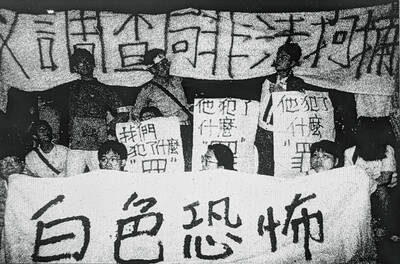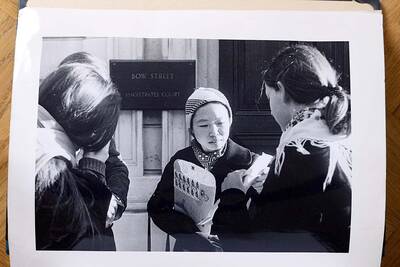The ingenuous 24-year-old man-child at the center of John Crowley’s wrenching melodrama Boy A is a familiar movie type: a basically good person who made a tragic mistake years earlier and is handed a second chance.
Adapted from a novel by Jonathan Trigell, the movie is unambiguously enamored of Jack Burridge, ne Eric Wilson (Andrew Garfield), who is re-entering society under a new name after having served 14 years in a juvenile prison in Manchester, England. Given a job and a modest one-room apartment, Jack seems ready to make a go of it. The details of his heinous crime are leaked out gradually.
Flashbacks portray Eric as the only child of troubled parents: a mother dying an excruciating death from breast cancer in an upstairs bedroom and a gruff father who broods downstairs over a bottle of whiskey. Relentlessly bullied by his peers, Eric develops a friendship with Philip Craig (Taylor Doherty), a fellow outcast with a history of sexual abuse and a streak of sociopathic rage.
The movie’s depiction of Eric, who at the time of his crime was identified as Boy A because he was underage, doesn’t jibe with its portrait of the dewy, verbally stumbling man released from juvenile prison. Shy and handsome, prone to frightening nightmares, Jack is desperately eager to put the past behind him. His emotional lifeline is his stern, kindhearted caseworker, Terry (Peter Mullan), who has a son around Jack’s age. The movie pointedly compares Terry’s alienation from his biological son with his devotion to his surrogate one.
Under no circumstances, Terry emphasizes, is Jack to reveal his former identity or discuss his imprisonment. The only information that his new employer at the delivery company that hires him has is that he served time and has paid his debt to society.
In some ways Boy A is a throwback to the sooty kitchen-sink realism of early-1960s British films by Tony Richardson, Lindsay Anderson and John Schlesinger, that portrayed a depressed, alienated working class teetering between rage and hopelessness in a stagnant economy.
In Boy A, Manchester looks much the same now as it did in movies back then. The identical brick buildings and narrow streets through which Jack furtively scuttles evoke time-honored film images of Britain’s northern industrial cities as forbidding, prison-like environments. Although shot in color, Boy A leaves a black-and-white impression.
Garfield’s performance makes Jack so endearing and vulnerable that as he takes his first wobbly steps, like a baby bird shoved from its nest, your instincts are protective. When he goes out drinking with his co-workers, and swallows a tab of Ecstasy without knowing what it is, you worry that disaster is imminent. Later, when he comes to the rescue of Chris (Shaun Evans), his closest friend at work, in a drunken rooftop brawl, the movie portrays his violent intervention as brave and not as a scary reversion to previous behavior.
Most important is Jack’s developing relationship with Michelle (Katie Lyons), the grounded, no-nonsense secretary at his job. Every step of that courtship, from gathering the courage to ask her out to sharing their first kiss, is a major personal leap forward. But as Jack’s heart opens, he longs to tell Michelle about his past and clear the slate.
One day when he and Chris are driving the company van, Jack spots a car that has spun off the road into the woods and saves the life of a young girl trapped in the vehicle. He becomes a local hero. But heroes — even genuine ones — are resented. So is the media attention that heroism brings. Society doesn’t forget violent crimes, even those committed by children. As flashbacks reveal Jack’s past, Boy A asks us to weigh issues of forgiveness, justice and human nature.
If the movie has already made up its mind that Jack is a good guy worthy of salvation, it implies that for the majority of people some crimes are unforgivable; once a monster, always a monster. The pill we are asked to swallow is a very bitter one.

From the last quarter of 2001, research shows that real housing prices nearly tripled (before a 2012 law to enforce housing price registration, researchers tracked a few large real estate firms to estimate housing price behavior). Incomes have not kept pace, though this has not yet led to defaults. Instead, an increasing chunk of household income goes to mortgage payments. This suggests that even if incomes grow, the mortgage squeeze will still make voters feel like their paychecks won’t stretch to cover expenses. The housing price rises in the last two decades are now driving higher rents. The rental market

July 21 to July 27 If the “Taiwan Independence Association” (TIA) incident had happened four years earlier, it probably wouldn’t have caused much of an uproar. But the arrest of four young suspected independence activists in the early hours of May 9, 1991, sparked outrage, with many denouncing it as a return to the White Terror — a time when anyone could be detained for suspected seditious activity. Not only had martial law been lifted in 1987, just days earlier on May 1, the government had abolished the Temporary Provisions Effective During the Period of National Mobilization for Suppression of the Communist

Hualien lawmaker Fu Kun-chi (傅?萁) is the prime target of the recall campaigns. They want to bring him and everything he represents crashing down. This is an existential test for Fu and a critical symbolic test for the campaigners. It is also a crucial test for both the Chinese Nationalist Party (KMT) and a personal one for party Chairman Eric Chu (朱立倫). Why is Fu such a lightning rod? LOCAL LORD At the dawn of the 2020s, Fu, running as an independent candidate, beat incumbent Democratic Progressive Party (DPP) lawmaker Hsiao Bi-khim (蕭美琴) and a KMT candidate to return to the legislature representing

Fifty-five years ago, a .25-caliber Beretta fired in the revolving door of New York’s Plaza Hotel set Taiwan on an unexpected path to democracy. As Chinese military incursions intensify today, a new documentary, When the Spring Rain Falls (春雨424), revisits that 1970 assassination attempt on then-vice premier Chiang Ching-kuo (蔣經國). Director Sylvia Feng (馮賢賢) raises the question Taiwan faces under existential threat: “How do we safeguard our fragile democracy and precious freedom?” ASSASSINATION After its retreat to Taiwan in 1949, the Chinese Nationalist Party (KMT) regime under Chiang Kai-shek (蔣介石) imposed a ruthless military rule, crushing democratic aspirations and kidnapping dissidents from